Overview of the history of Turkey for the escorted traveller.
For the senior traveller Turkey is an interesting continuum in human settlement from Neolithic to the Romans through to Ottoman period. Enjoy one on the best guided small group tours of Turkey after reading this article.
25 May 20 · 21 mins read
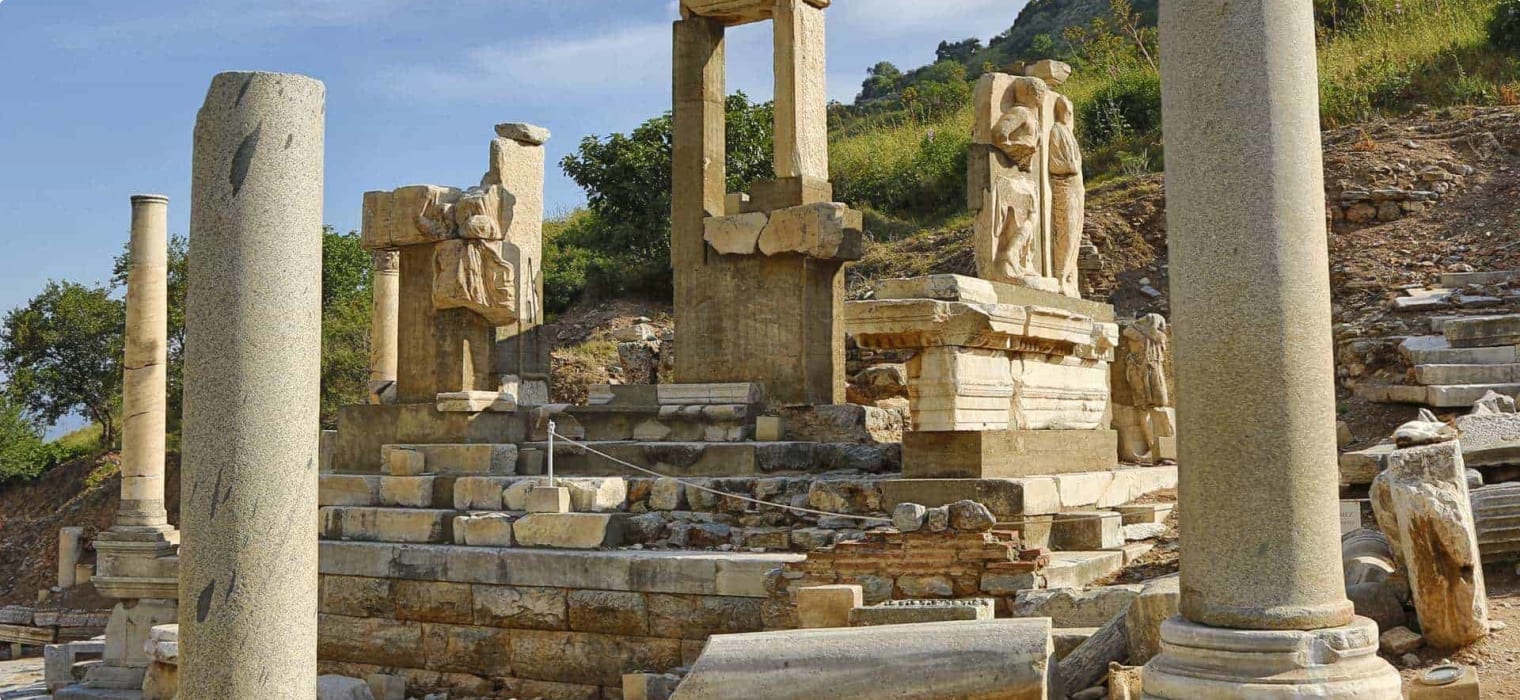
An overview of the history of Turkey for the escorted traveller.
Since 1983 Odyssey Traveller has been offering guided small group tours to mature and senior travellers to almost 200 destinations around the world. Our escorted small group tour of Turkey remains a popular choice as destination for couples and solo travellers seeking an introduction to the place that was the crossroads for Asia and Europe, the terminus for the silk road and the Bosphorus strait, a narrow waterway for the control of the Black sea and the goods transported through to Mediterranean sea. This article seeks to set the historical scene for our escorted small group tour of Turkey for you and your tour guide. To understand and appreciate in detail the fascinating history that has evolved in Turkey over the centuries, your Turkey tour should get beyond a regular escorted tour visiting Istanbul, Gallipoli, or Izmir.
For Odyssey Traveller our escorted small group tour of Turkey for the senior acknowledges the importance of these places and the stunning scenery of the turquoise coast and the sandy beaches in the itinerary. However, this guided tour seeks to take the traveller on a small group tour of Turkey that also provides an understanding of the historical context and important contribution key events have had in shaping the nation that is reflected in your tour experience of this fascinating country, that is Turkey that held the key for such a long period of time between the East and West.
Modern Turkey appears to the first-time visitor on a small group tour or as an independent traveller as something of a tapestry, something like the famous Turkish kilim or flat weave, where we see a vibrant lace of colours, intertwined with sights, sounds and smells. Yet to look a little deeper reveals the history of Turkey to be a palette on which great civilisations sketched out a place for their cultures and their cities on the landscapes of Asia Minor. Look almost anywhere as you move through the cities and countryside of Turkey and you will come to realise that remnants of Turkish history through the remaining ancient ruins form a major part of the topography surrounding you. You can also observe, if you look closely, certain of the origins of today’s unique Turkish culture.
Perhaps the most noticeable ancient ruins are those of ancient Graeco-Roman metropolises preserved in larger cities and widely scattered throughout many regional areas. They seem to dominate, but the observer must realise that often we only see a later phase in long series of successive civilisations dating back thousands of years, back well beyond even the Bronze Age in this, the westernmost section of Asia.
Turkey straddles a crucial waterway, the Bosphorus strait, that joins the Black sea with the Mediterranean sea with one foot in Europe and the other in Asia. Throughout the history of Anatolia, Asian Turkey, and of Eastern Thrace, European Turkey, the region has served as an important trading conduit, witnessing the passing, and the rise and fall of numerous groups, empires and civilisations. Perhaps as conquerors, perhaps as merchants or traders, perhaps as nomadic tribes in search of pasture, all manner of people have ventured to Turkey leaving behind their footprint in one form or another.
Travellers to Turkey can explore with a tour itinerary, the sprawling ancient world remains of Greek and Roman cities, then travel a short distance to venture into the architectural marvels of Hittite towns. A few more giant steps takes you onto the magnificent Byzantine castles, the opulent palaces of Ottoman sultans or the mysterious caravanserais from the Seljuk times allowing you to ponder their contribution to the modern Turkish nation as you discover Turkey.
A dazzling array from the past often seen through a UNESCO World heritage site that awaits travellers to enthral and to capture the imagination – truly a Turkish tour may be better called a Turkish delight. Look out from almost any chosen vantage point throughout the country to become part of the experience, a tale dating back over countless millennia. Çatal, Höyük, Pergamon, Ephesus, Aphrodisias to name but a few from a seemingly endless checklist, with each and every site able to evoke a sense of awe and wonderment in the observer on a small group tour.
The following sections begin to introduce the traveller to the ancient history and sites to be seen in Turkey through to the dawn of the 20th century.
Early Prehistoric Evidence
Archaeological work in Eastern Anatolia has revealed the region was first inhabited by hunter-gatherers tens of thousands of years ago, as with so many areas of our world. These basically nomadic peoples wended their way across fertile plains, over lowlands and into mountain systems to follow food sources and best utilise the changing seasons.
Travelling in small extended family groups they sheltered in caves, as the discoveries in the Antalya region at Karain, Beldidi and Belbaşi show, or possibly rested just in simple huts long since disappeared. It is also likely that these clans often passed along the same routes, summering in one successful area then wintering in another, perhaps as people these days tend to shop at the same supermarket.
As families moved around, particular sites along the way would have become imbued with meaning and significance to them. The specific reasons underlying such decisions have been lost, leaving it all very much up to interpretation today. An unusual feature of landscape, a suitable spot to view the heavens, an unusual number of food animals or plants may have contributed to the choice of a revered location. Even the untimely death of a member of the clan, or an inexplicable occurrence at a particular junction may have made return to the same place again and again a matter of symbolic ritual. Whatever brought this about, rest assured each and every group formed basic belief systems for their existence.
Time passed and as people better adapted to their environment families began to band together, perhaps for security or possibly subscribing to the adage, ‘many hands make light work’. As a result, settlements began to form early in the 7th millennium BCE. It is around this time, the later Neolithic Period (from the Greek νέος néos , ‘new’, and λίθος líthos , ‘stone’), that Çatal Höyük in Southern Anatolia, a site now under investigation by Ian Hodder of Cambridge University, began to grow above its surrounding plains. The importance of these neolithic ancient ruins is reflected in the UNESCO world heritage site status for Çatal Höyük.
Çatal Höyük is often spoken about as the ‘first real city’, with its large population producing, among other things, a unique ceramic typology. Many examples of the site’s distinctive wares and other finds, including the oldest weaving yet uncovered, can be viewed during a trip to the Museum of Anatolian Civilisations in Turkey’s capital Ankara .
Following on from this age of settlement, came the Chalcolithic Period (from the Greek: χαλκός khalkós, ‘copper’), defined by scholars to have begun in the early 6 th millennium BCE. However, no clear break in cultural patterns is in evidence on any of the major Anatolia sites. There appears continuity in occupation that would likely indicate no major ethnographic upheaval but rather a gradual evolution incorporating innovations and influences from other areas. The advent of the use of metal tools filtered in from the Mesopotamian region and rapidly spread and developed during this period.
Communities increased in size with larger populations now able to be supported by more efficient agricultural methods. In addition, the surpluses being produced provided for extension of trading networks far beyond local districts. This also contributed to the formation of some of the first Anatolian Kingdoms, each exerting control of large city-states. There is also evidence of a need for increased defence with many ancient city sites now enclosed by a circuit wall. Some of these archeaological features you will see and are included in the itinerary of your escorted tour of the Anatolia region.
As Anatolia moved into the early phases (3000-2500BCE) of the next period, the Bronze Age, there once again is no clear cultural break obvious in the archaeological record examined in the ancient ruins available for most of the country. However grape and wine production appears to have taken on a far more ‘commercial’ aspect while the introduction of the pottery wheel allowed ceramics to be produced on a much larger scale. Certainly, and likely due to the greatly increased output of material goods, expansion continued into other regions, with coastal settlements and the associated inroads into seafaring a major feature. It is at this time that the first permanent settlement at coastal Troy was founded, the city trading with mainland Greece, the Aegean Islands and perhaps even further afield.
Sometime around 2000 BCE, a powerful group, the Hatti , became entrenched in central Anatolia, near modern day Kayseri . From this base, they ruled over the surrounding trading communities. At this point Anatolia emerges from the ‘prehistoric’ with the introduction of written records. It is in the records of the Hatti , preserved on some of the earliest ‘clay tablets’ of the region, that archaeologists have found the name of the best known culture of ancient Anatolia, the Hittites .
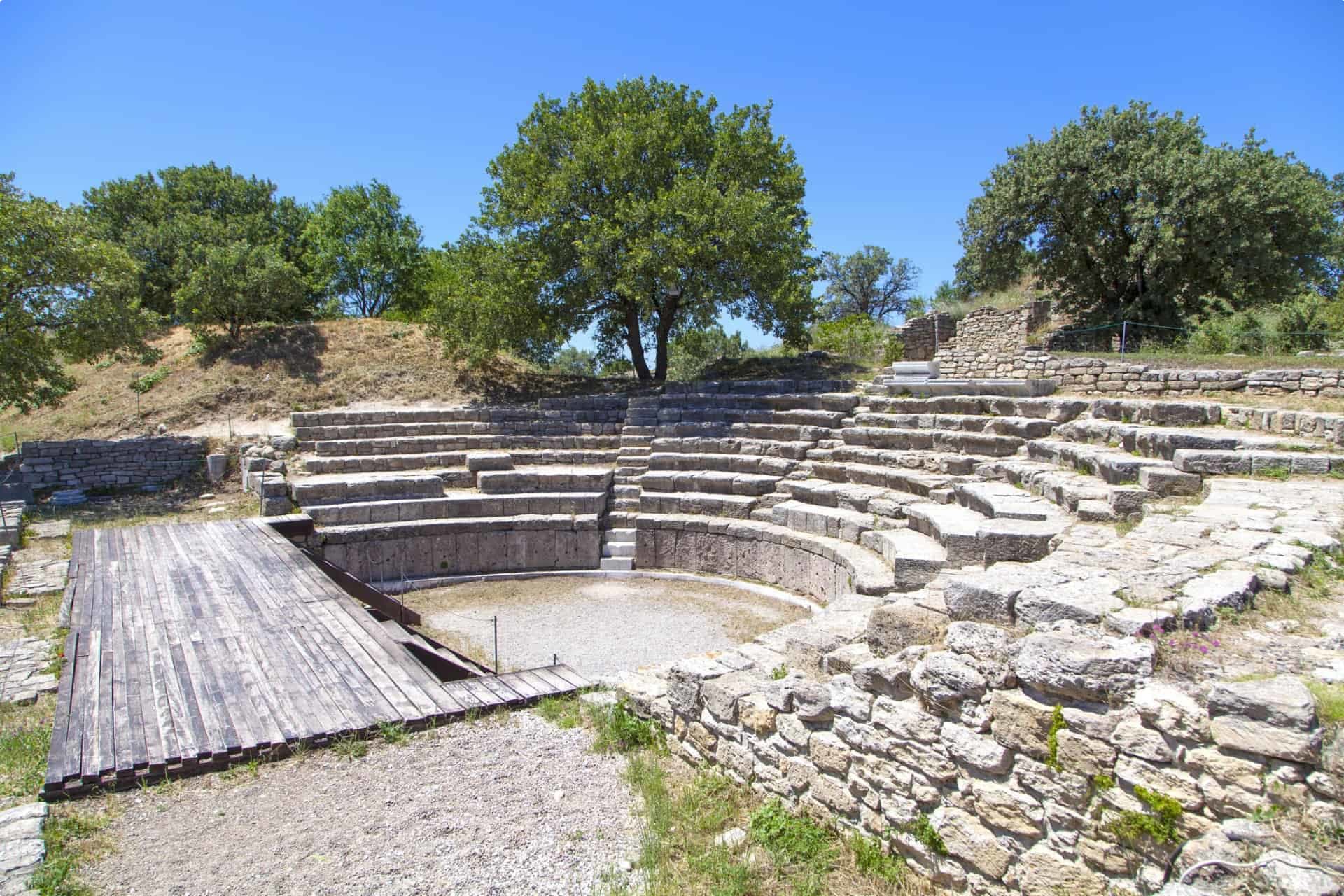
The Age of the Hittites
Although the origin of the Hittites remains obscure their impact of the cultural landscape of Anatolia is unmistakeable. Along with other Central Anatolian principalities, the rule of the Hatti declined over the first two centuries of the 2 nd millennium, with the power of the Hittite kingdom soon bringing most of the region under their control. The Hittite unique artistic style is believed come from a combination of the indigenous Hatti renderings and immigrant Indo-European influences.
Around 1750BCE, marking the beginning of their Kingdom, the Hittites relocated their capital from the old Hattian centre of Alacahöyük to Hattuşa ( Boğazkale ). It was here that the Hittites lay down one of the most impressive displays of military architecture to be found anywhere in the Middle East. Cyclopean masonry combines seamlessly with the rugged topography of the chosen site creating something of a masterpiece of defensive and offensive design. Enclosed within this mammoth defence system were palaces, dwellings, cult sites and no less than five magnificent temples, the remains of which continue to impress even today.
Strangely, no objects or statues that could be identified as directly related to the Hittite beliefs have been unearthed during archaeological investigation to date. Sadly, no free-standing stone sculpture has yet been found that can be connected to the Hittite Empire at Hattuşa . However, less than 2km to the north-east from the ancient capital, in a series of unusual rock formations and passageways, well preserved stone- cut reliefs display the entire pantheon of the Hittite gods. The site of Yazilikaya forms an outdoor gallery of male and female deities to whom a temple, recently found nearby, was likely dedicated.
During the 15 th and 14 th centuries BCE the Hittites held the position of one of the three most important states in the Near East, sharing the control of the eastern world with the Egyptian kingdom. At around the same time the ancient city of Troy had become a regional ‘heavyweight’ with its strategic position pushing it ever upwards and unfortunately into economic contention and competition. Homer’s Odyssey and the famous Trojan War winning strategy of the wooden horse provide something of the historical truth to this particular era. Certainly the poet’s imagination contributed to his recording of the episode but it highlights the toppling of another ‘giant’.
The final chapters in the tale of the Hittite Empire elude any accurate reconstruction but it appears the empire came under increasing pressure from their subject principalities as well as probable attacks on their capital Hattuşa by the Thracians and other groups. Written evidence from the Hittite capital disappears somewhere around 1180 BCE, with contemporary Egyptian sources indicating mass migrations of South-East European tribes taking place at about this time. There are references also made to the incursions of the Sea and Island Peoples. It can be reasonably assumed such upheavals and aggressive population movement shattered the Hittite’s control propelling Anatolia in to its ‘Dark Age’ (c. 1180-750BCE).
Post-Hittite Anatolia
Although it is certain smaller units of Hittite descendants maintained elements of their culture, belligerent migratory groups operating along the southern coast of Anatolia continued to cause major disruption. Following the ancient and long-established trade routes between the Greek sphere and the Middle East they found a perfect connection, a bridge between the west and the east. They came to understand the advantages Anatolia had to offer and rather than move through settled with new political and regional divisions soon in place.
By the 8 th century BCE the Phrygians , originally from Thrace , had arrived to occupy most of western and central Anatolia. Their famed capital of Gordion reached it apogee under the well-known King Midas . To the east another group, the Urartians , had carved out their own space not far from Lake Van. Yet another well-known group, the Lycians , created a network of settlements stretching from Antalya to Fethiye . Also around this time, as Greek influence continued to take hold in Anatolia a number of the still well-known Greek city-states were founded along the western Aegean coast, among these Ephesus , Miletus and Priene . The southern part of that area became known as Ionia , the northern part as Aeolis .
Inland from the coast another new people, the Lydians came to western Anatolia. Their first settlement and capital was at Sardis, near Smyrna , the modern-day city of Izmir . Ancient writers attribute the first use of coins to this group. The last king of Lydia was Croesus . Most renown for his wealth, he contributed much to support Greek culture within Anatolia. We are told he made great offerings to sanctuaries, including Delphi (Greece), Miletus, and Ephesus. Some of the decorated pillars found in the Temple of Artemis at Ephesus are a result of his devotion and generosity. The archeoelogical and ancient history importance of the Temple of Artemis, which is a UNESCO world heritage site is not lost on your tour guide or your tour itinerary as part of your escorted small group tour of Turkey. These particular attributes, especially generosity led by Croesus, have filtered through into the Turkish culture of today’s Turkey. Archaeologists studying the ancient ruins and cities have revealed an array of what they believe to be installations for the refining of gold adding credence to the stories of this Kings great wealth. There is also the possibility of the tale from this ancient world of the mythical ‘Golden Fleece’ having an origin in Sardis where a sheep’s fresh fleece was one method used to capture alluvial gold flecks from flowing water.
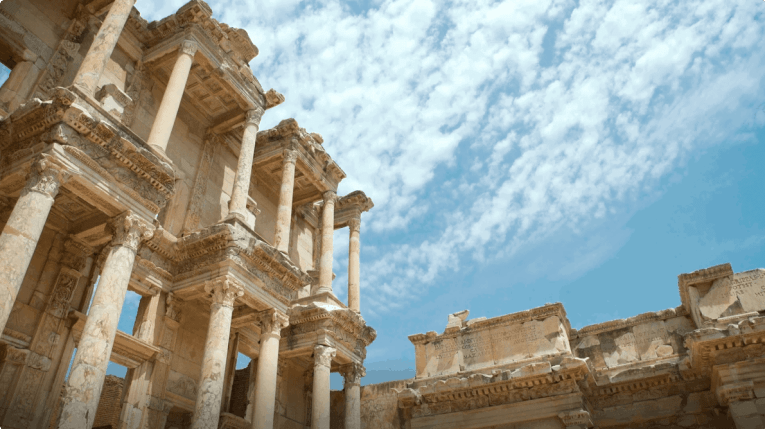
Herodotus, an ancient writer born in Anatolia, speaks of Croesus controlling much of Western Anatolia although he was sure to have allowed the Greek cities considerable autonomy. Nevertheless, he worried over what he saw as the growing threat from the Persians who had become well established in central Anatolia. Rather than wait, Croesus decided to make war against the Persians , crossing into their territory with his army in 547BCE. After an indecisive battle, likely in the region Boğazköy , he returned home to gather reinforcements from his allies for a later campaign. Unfortunately, the Persian ruler, Cyrus the Great pursued the retreating army to besiege Sardis . The Lydian capital fell shortly after and Persian control was extended over the region.
From the fall of Sardis through until 334 BCE, Anatolia was controlled by the Achaemenid Empire of Persia, yet the influence of Greek culture remained and in fact gained in strength in particular areas. Coastal regions such as Caria and Lycia tended to be strongly influenced but a steady penetration of Persian culture into other regions including Cappadocia and even further into Eastern Anatolia. Perhaps the best illustration of the blend elements from Persia, Greece, and Anatolia can be found in the religious systems as they adapted and evolved. It is likely that linguistic independence was maintained in many districts although Aramaic surfaced as the official language appearing on both coinage and dedicatory inscriptions.
Anatolia in the Hellenistic & Roman Age
In 333 BCE yet another group entered onto the scene. The Macedonians, led by Alexander the Great swept into Anatoliaseizing power from the Persians and bringing about the downfall of the Achaemenid Empire. The empire wrought by Alexander was short-lived as disputes among his successors caused an unrecoverable splintering of his great territories. Three of Alexander’s commanders usurped their respective domains to create dynasties of their own – in Syria, the Seleucids, in Egypt the Ptolemies and in Macedonia the Antigonids . This fragmentation also meant that once again Anatolia itself was divided, this time between Ptolemaic Egypt and the Seleucids. It was during this period that the city Pergamum , resembling somewhat a mountain fortress because of it position, gained in power as its rulers cleverly played competitors in the political and military realms. Successive rulers of Pergamum took advantage of lapses on the part of the Seleucid kingdom expanding control over much of their territory.
This expansion though was short-lived with Seleucid dominance soon restored and the borders of Pergamum severely restricted by Antiochus III . Building upon his initial successes Antiochus set about conquering much of the coastal areas up to and along the Hellespont (the Dardenelles ). Fearing still further expansion, Pergamum and Egypt petitioned Rome for assistance. At first Rome hesitated to become involved but when Antiochus crossed into Europe in 196BCE, they intervened sounding defeating the Seleucid ruler in two decisive battles. These defeats, the first at Thermopylae and the second close to Sardis allowed him not choice but to accept the terms of the Roman peace. This meant that Rome was the now the preeminent power for the Hellenistic east.
The final stage of Roman asserting control over Western Anatolia came when the last ruler of Pergamum , Attalus III died without an heir. He bequeathed his city to Rome paving the way for the reorganisation of the region as the Roman province of Asia with Ephesus as its capital and cultural centre. Much of the remaining areas of the peninsula fell under Roman control during the 1stcentury BCE. The off ice of the proconsul administered the province, with little need for a strong military presence even during the period of transition from Republic to Empire. Cities in Anatolia were for the most part given free reign to govern.
The Roman Period provided the necessary environment for trade to greatly increase while also providing for the influx of cultural aspects to blend with those already in place. Rome brought with it the knowledge of proper organisation so public works were widely undertaken to upgrade the infrastructure across the region of Asia Minor. Cities such as Perge, Aphrodisias, Aspendos and Ephesus flourished and expanded their political and cultural influence. The Roman emperors Augustus, Hadrian and Trajan all visited the province to oversee aspects of the development, likely travelling along the newly-laid road network.
As the Roman Empire expanded it had become more difficult to manage. An attempt to solve this by Emperor Diocletian (285-305CE) dividing the empire into what he thought would be two more manageable sections, eastern and western. It is also believed that this move was to curtail the spread of the new Christian religion, something that also proved to be unsuccessful. Diocletian’s decisions caused a major rift and brought about civil unrest and ultimately a civil war. Constantine, a recent convert to Christianity, triumphed in the dispute allowing him to move forward with his ideas.
The ancient city of Byzantium was chosen as the new capital for the Roman Empire in 324CE, the choice of the emperor Constantine the Great . Some six years later the city was dedicated to him and took on its new name, Constantinople . The city gained a reputation for its complex defence system initiated soon after the city’s dedication with the first wall enclosing the city. Even today remnants of these massive walls can be seen with many of the streets of modern Istanbul following those of the time of Constantine. It is said that the new capital was designed to ‘outshine’ Rome. The Eastern Roman Empire then became also known as the Byzantine Empire and, in a sense, was basically a continuation. In fact, the majority of people continued to refer to themselves as Roman.
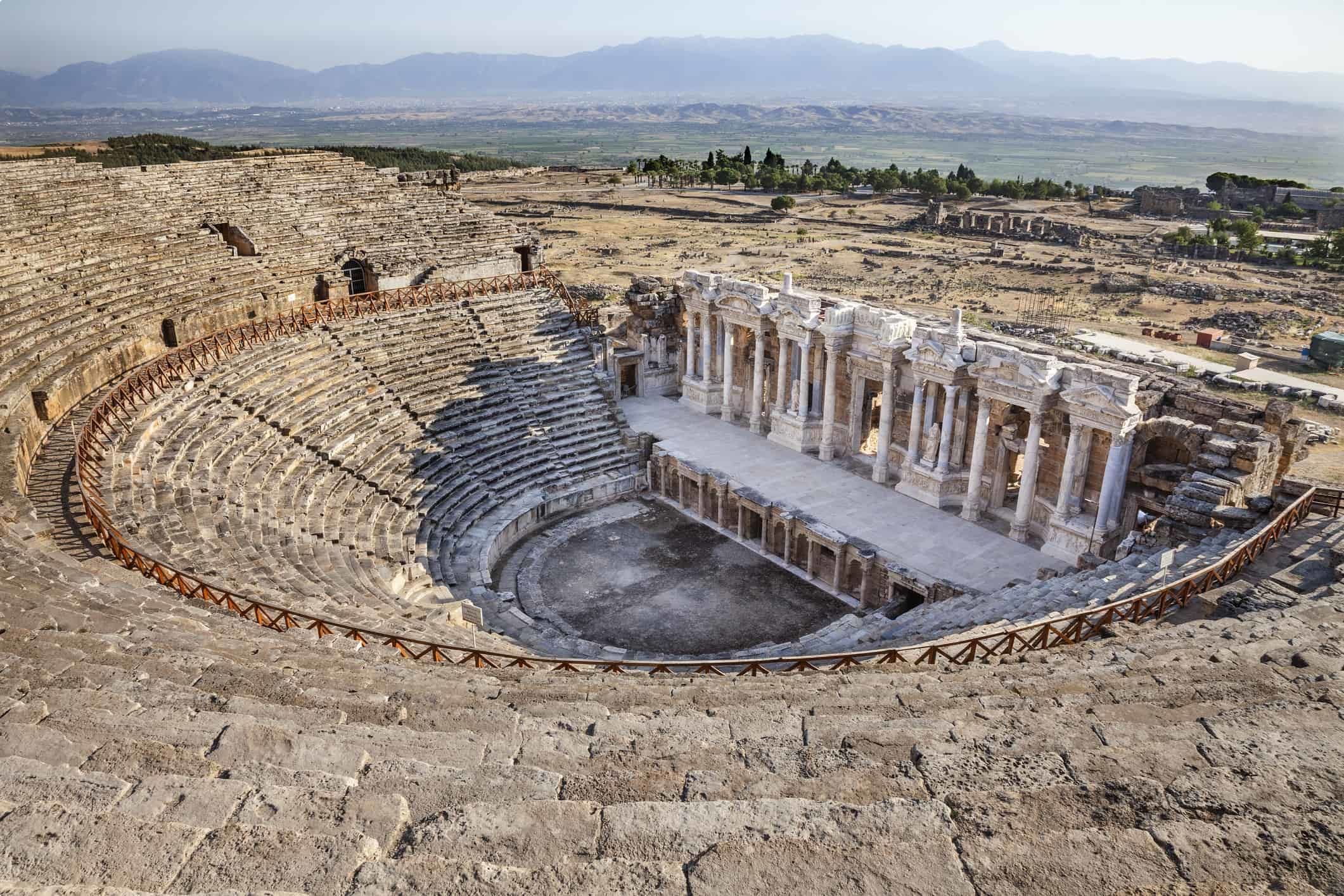
In a matter of a few short decades of the history of Turkey, though the decision to split the empire proved ill-fated for Rome. The west was overrun by ’barbarians’, tribes such as the Goths , resulting in complete loss of control there. While in the east, greatly assisted by Constantine’s leanings, Christianity was adopted and continued to flourish in Constantinople (modern-day Istanbul) spreading through Anatolia.
In the later Roman Period (Early Byzantine), much of central Anatolia as well as eastern Anatolia were reorganised into smaller districts governed locally but centrally controlled by the prefectural headquarters located in Constantinople. The population of Anatolia was concentrated along the coastal areas of the Mediterranean sea or the Black sea with large urban settlements as focal points. On the wider plains inland where climatic conditions were favourable cities also grew up. Constantinople continued to grow in prosperity and size as it fulfilled the function of a gateway between Europe and Asia. Hagia Sophia in Istanbul , still a true jewel of even a domesticated Turkey was ordered built by the Christian ruler Justinian , sometimes referred to as the last Roman.
As is much the case in modern Turkey, land on the plateau was mostly utilised as pasture while on the more fertile coastal plains the cultivation of vegetables, cereals and olives. Of course all cities relied upon the agriculture production of their satellite villages and farms with the producers travelling to market their goods. Coastal cities such as Istanbul Antalya, Mersin and Bursa or at least those with suitable harbours functioned as centres for longer-distance trade and distribution for the Mediterranean sea
The Era of the Seljuk Turks
Unfortunately in the 7th century conditions altered drastically with Persian invasion and occupation. The unsettling effects of hostile interventions continued over the next century with damaging incursions by Arab raiders shattering the peace and collapsing administrative networks. The city of Ankara was captured the Arabs in the middle of the 7th century and less than twenty years later they had laid siege to Constantinople . Although the attack on Constantinople ultimately proved unsuccessful, the other Arab conquests marked the introduction of a new culture, a new language and a new religion. A combination these raids in turn impacted adversely on the social, cultural and economic structures of much of eastern Anatolia as well as Central Anatolia.
Whether or not these deteriorating conditions of the country directly contributed is debatable but plague swept through the eastern Mediterranean on many separate occasions during the 7th & 8th centuries. The debilitating effects on the population made the long-established patterns of urban settlement far less viable and far less attractive for any investment.
Also around this time nomadic tribes of Turks began to filter in across central Asia, establishing themselves and growing in strength and power over the next two centuries, centuries of struggle and failed treaties. Even in the face of such apparent disarray and external threats militarily the system was maintained that is until the mid-11th century when after another failed agreement the Seljuk Turks moved to within striking distance of Constantinople . The massive walls kept out the Turks from the capital but control of central and eastern Anatolia was relinquished confining the Byzantine people more to the coastal areas.
Commercial activities formed an important component of the Anatolian Seljuk Turk economy in Anatolia. The Crusades had stimulated interest and demand in Europe for goods from the east and it was a simple matter to promote trade once certain trading routes had been secured. The mysterious caravanserai , fortress-like rest-houses, along with bridges, defence systems and even harbours formed the infrastructure for the creation of immense trading wealth. The tombs and palaces of the individual rulers clearly showed affluence yet looking beyond these more obvious expressions of extreme prosperity reveals something far deeper. The founding of mosques and religious centres paved the way for spreading knowledge and support of Islam among the wider populations. However, for the Seljuks, not everything went their way over the next two centuries, with their power and regions of control varying as they were challenged and pushed back a number of times. Mongol intervention also threatened Seljuk Turk authority on numerous occasions.
Constantinople’s fortunes fluctuated as well with fire destroying many areas in 1197, earthquakes, riots and the sacking of the city during the Fourth Crusade at the very beginning of the 13th century. Now although the city was retaken a half a century later most of the inhabitants had fled and thus the capital struggled to recover any of its former economic glory or its defensive capabilities. Also as a result of the re-conquest of Constantinople attention shifted back to the city itself and away from other areas leaving them even more vulnerable. Much of the coastal regions and the south western areas were lost to the Turkmen and other groups coming in from Armenian regions and Central Asia by around 1270, with the fertile Maeander valley soon falling prey.
The Ottoman Empire
Ottoman history initially follows similar lines found in the history of many nations. Among the independent and competing tribes of Turkmen was a group rapidly gaining power and authority, the Ottomans. Led by a man named Osman they continually threatened and harassed any of the districts that had yet to be taken. Over the next century following the leader’s death Ottoman rule extended their control over Eastern Anatolia and beyond. The Byzantines continued to lose their territories leading to the rise of the Ottoman Empire. With the Battle of Nicopolis on the Danube in 1396, the last crusade with such a multi-national force the power of the Ottomans was firmly consolidated and recognised.
With continued expansion down through the Balkans as a major part of their strategy, Constantinople stood as a symbolic and physical threat. The great city’s conquest was therefore a crucial piece in the overall plan. The Ottomans had already snatched any semblance of Byzantine power along with all territory surrounding Constantinople . Although there was brief respite from the Ottoman onslaught such as their defeat at the Battle of Ankara in 1402 by a Turk-Mongol force, the situation remained unchanged with Ottoman power soon restored.
In 1444, the Ottoman Sultan, Mehmed II ascended the throne for a brief two years when his father returned to rule when internal strife could not be quelled. Mehmed waited in the wings while his father dealt with this unsettling dispute. He carefully observed as the Ottomans gathered momentum planning both political and military strategies for when he once more was in the position to implement these. On the death of his father in 1451, he became Sultan stepping up to take his place in Ottoman history.
As a most erudite scholar of historiography, perhaps Sultan Mehmed II was spurred on towards taking Constantinople (Istanbul) and becoming noted in Ottoman history by the words of Prophet Mohammed, ‘One day, Constantinople will be conquered. How wonderful and blessed are the commander of its conquest and his soldiers!’ Whatever the motivation Mehmed successfully overthrew the stronghold bringing the end to any power that may have remained in Byzantine hands. After entering the city in May of 1453, Mehmed adopted the title of ‘conqueror’ and living up to this name, carried out many successful military campaigns followed the taking of Istanbul.

The Ottoman Empire continued to expand across Asia Minor and further into Balkan areas while prospering under the leadership of a line of effective rulers, successful Ottoman Sultan following successful Ottoman Sultan. The long-established trade routes between Asia and Europe, now under the Ottomans’ control, brought great economic benefit. In existence for over six hundred years, the Empire at its height spanned most of south-eastern Europe, the majority of the areas in today’s Middle East along with North Africa and the Arabian Peninsula. Cleverly, particular traditional institutions from Byzantium and the Turkish Empires were mixed with economic, political and social ideals of Islam . The result being new and more encompassing forms emerged and ushered the area into something that lasted into modern times.
It is difficult to say exactly when The Ottoman Empire began its decline and indeed why it collapsed bring Ottoman history to a conclusion. Examination of the historiography suggests a lack of cohesive over such a wide expanse of territory greatly contributed. This teamed with an over-reliance on agriculture when the rest of Europe was undergoing the Industrial Revolution may well have been underlying factors. However, the ideals of Nationalism and their gradual spread into the Empire likely acted as the crucial catalyst despite later attempts to modernise.
The Ottoman Empire had been a large multinational empire ruled over by an absolute monarchy. Its organisation and economic base also meant necessary involvement with the machinations of the great powers on the continent. This participation meant that with the coming of war in 1914 that the empire was drawn in and forced to choose a side. Additionally, even though there had been an extended era of cultural and economic decline, and widespread internal discontent, the Ottoman Empire still held sway over modern-day Turkey in its entirety along with the majority of the Middle East. The common reference to Turkey as ‘the sick man of Europe’ belies the fact that the Empire had no trouble at the outbreak of war in the fielding over well over a million soldiers.
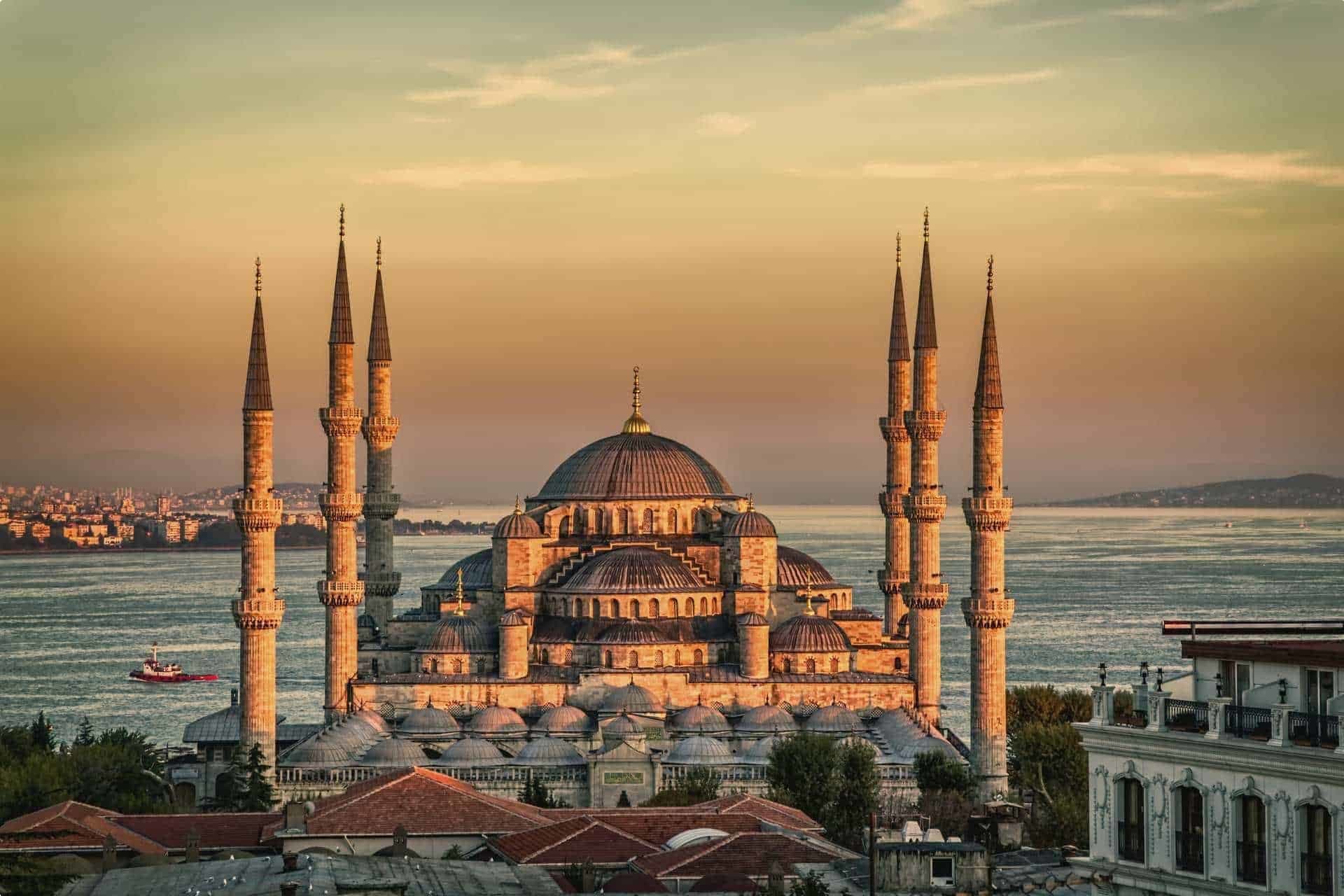
Unfortunately, after the fateful decision to fight on the side of Germany in World War I, the armistice treaty signed at Mudros Harbour on the Greek island of Lemnos, in effect, set about the complete dismantling of the Empire. British and French troops immediately began occupying areas of the fallen Ottomans. Ottoman history moved very rapidly towards its end at the conclusion of World War I. The final blow came in 1922 when the last of the Ottoman sultans , Mehmed IV was deposed and departed from Constantinople, Istanbul. From this point modern Turkey emerged moving more towards a developed Turkish state and Turkish nation. This was a new beginning for the Turkish people and an incentive for the Turkish economy, with Turkish rule soon to become unified again under efficient leadership. Another chapter in the long history of Turkey was about to begin.
Odyssey Traveller’s escorted small group tour of Turkey provides a platform for the senior traveller interested in continuing to learn, whether as a couple or solo traveller, about this fascinating country full of history, incredible people, and stunning scenery. To bring the history to life on this small group tour to this unique part of Turkey , this tourcommences in Istanbul , where on this guided tour , ancient history commences under the backdrop of the Bosphorus strait and where Asia meets Europe. The group tour over 21 days travels from Istanbul to Cappadocia. We go on a Pamukkale tour, see the ancient ruins of Ephesus and the mosques in Turkey, and view the Aegean Sea, with our local tour guide sharing with you both the ancient and contemporary history and scenery of this incredibly diverse nation. The tour stops in nine key places that have played pivotal roles in the development of Turkey.
The itinerary of the escorted tour takes in many of the most famous sites and sights of the ancient world to discover Turkey. Istanbul is one of the world’s oldest cities and has been at the centre of civilisation for centuries. We visit a UNESCO World Heritage Site, the Blue Mosque, a beautiful structure built between 1609 and 1616 by Sultan Ahmed during the age of the Ottoman Empire to house his tomb. The Mosque features six spectacular minarets, the culmination of two centuries of Ottoman mosque development. You will see the Greek theatres in the ancient city of Pergamon, the legendary Greco-Roman cities of Troy and Ephesus, and discover the cultural centres of Ankara and Izmir.
In Antalya the tour itinerary schedules a visit to the ruins and archaeological museum, which is filled with treasures from ancient times as Antalya is the major city of the Anatolian Mediterranean. In Saralti, we visit its underground city. In Konya, we learn about the mystic Whirling Dervishes. Our Turkey small group tour also includes a visit to the extraordinary limestone formations of Pamukkale, as well as the underground city and cave churches in Cappadocia.
A large part of our Turkey small group tour program is spent in Anatolia, in eastern Turkey. This tour also spends time on the Gallipoli Peninsula and in Istanbul, the European part of the country known as Thrace or Western Turkey. Of course these smal escorted small group tour of Turkey like any European tour, include in the itinerary time in special places to explore further.
Articles
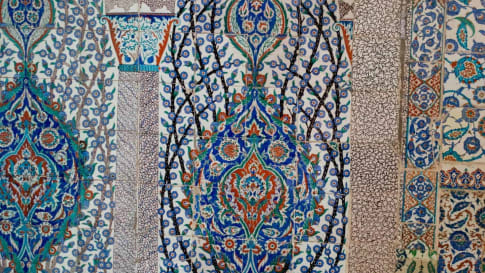
Anatolia to Ottoman Empire: Definitive Guide for Travellers
Turkey: From Anatolia to the Ottoman Empire | Small group history tours Turkey The Ottoman Empire, also historically known in the West as the Turkish Empire, was a superpower that lasted for 600 years. Parcelled…

Ankara, Turkey
Ankara, formerly Angora, the capital of the Turkish republic, is located a little to the west of central Anatolia about 350 kilometres southeast of Istanbul. It is the centre of Turkish Government and houses all foreign embassies.
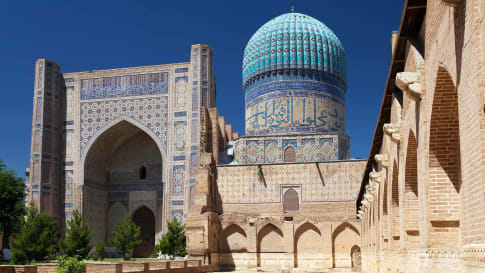
Elements of Mosque Architecture
The word "mosque" often brings to mind not this simple prayer space, but the ornately decorated monuments built by powerful Islamic rulers.
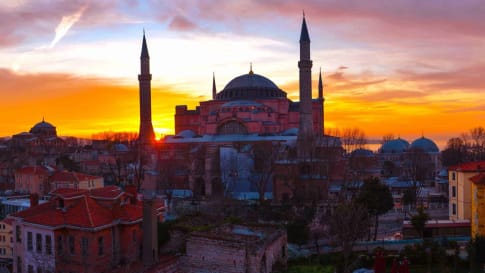
Ideas when visiting Turkey for Mature & Senior Travellers
Ten things to see in Turkey | Small group history tours Turkey Turkey has much to offer when it comes to the nation’s history, food, and landscape. The country has a number of ancient monuments…

Istanbul, Imperial City: The Definitive Guide
Istanbul, Imperial City | Small Group History Tours Turkey For more than a thousand years, Constantinople stood as the capital of the Byzantine Empire, surviving numerous attacks and internal rebellions, until the cannons of the…
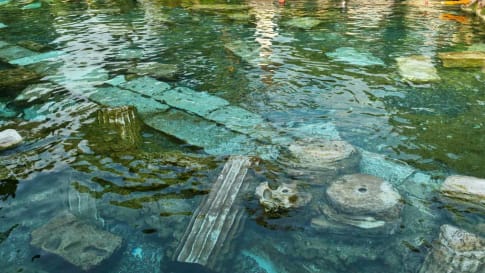
Pamukkale, Turkey
Pamukkale, which in Turkish translates to "Cotton Castle", is a UNESCO World Heritage Site and one of Turkey's famous and most visited tourist attraction.
Related Tours

21 days
Apr, AugSmall group tour of Ancient Turkey
Visiting Turkey
As a travel company we seek to keep guests off the beaten path. Trips that are remembered for authentic experiences. Our small group journeys in Turkey are fully escorted by an experienced local guide and an Odyssey guide to give this type of experience whether at one of the many UNESCO World heritage sites explored or local bazaars. It is always about the adventure and memories that we will create.
From A$17,295 AUD
View Tour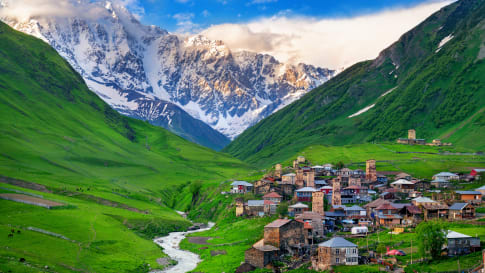
22 days
May, OctSmall Group Tour to the Caucasus | Armenia Azerbaijan Georgia
Visiting Armenia, Azerbaijan
This small group program is designed to give people an opportunity to explore Tbilisi, Baku, Yerevan as well as important monuments, historical and religious sites, diverse landscapes and ancient architecture by visiting the Caucasus Mountains and the lowlands of Armenia, Georgia and Azerbaijan. Led by local English speaking guides, there will be the opportunity to meet local people.
From A$11,835 AUD
View Tour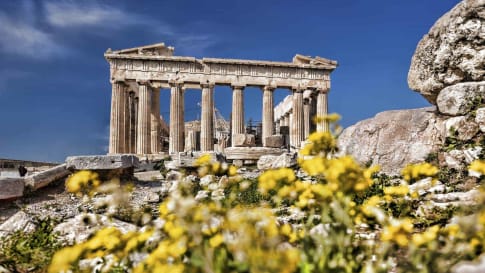
22 days
Apr, Sep, MayGreece small group escorted history tour
Visiting Greece
Our 22 day small group tour explores the land of great philosophers, myths, and legends. We will learn about the culture and heritage of modern Greece whilst exploring and learning Athens, which only found independence in its uprising from the Ottoman Empire in the 19th century.
From A$14,145 AUD
View Tour
